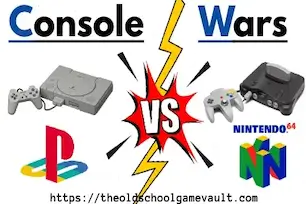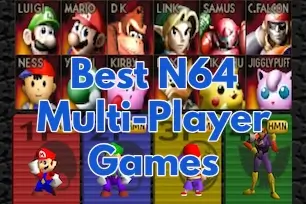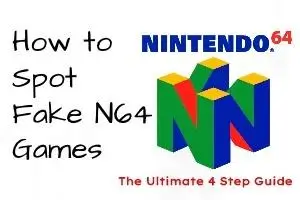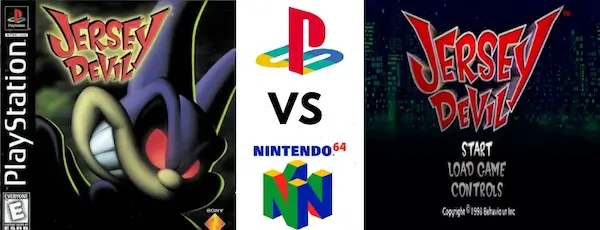
It’s a dark night. Clouds roll across the sky like ominous warnings. In the far corner of Jersey Town, there is a dark castle on a hill. Inside, the mad Dr. Knarf is busy in his lab. He is plotting to ruin good vegetables and stop them from being eaten by people.
Suddenly, a loud bang.
His pumpkin-headed assistant bursts through the door:
“Master, Master!”
“This better not be a rat again,” Dr. Knarf mutters.
But it’s no rat. It’s something far cuter… and far deadlier.
Enter: the baby Jersey Devil.
KABOOM. No more lab.
Years later, Jersey Town has grown into a metropolitan sprawl. Now, rumors swirl. Citizens vanish. A dark figure looms above the city skyline.
No, not Batman.
It’s the Jersey Devil. And he’s back.
The Table of Contents
Jersey Devil – A PS1 Platformer with a Gothic Heart
If Tim Burton had made a 3D platformer in 1998, Jersey Devil would be it. The game has a unique charm with its gothic cartoon style. The lively animated intro quickly pulls you into its unusual world.
In the grand tradition of the retro console wars, Jersey Devil shows exactly why the PS1 vs N64 debate still stirs up emotion today.
While the Nintendo 64 had its hits with:
- Banjo-Kazooie
- Donkey Kong 64
Those are great games, but this PS1 title offered a well-crafted experience. It felt unique, clever, and more creative.
PS1 vs N64: Platformer Philosophy Clash
There’s a clear philosophical divide in the PS1 vs N64 platformer war:
- Jersey Devil (PS1): Linear structure, tightly designed levels, story-driven progression
- Banjo-Kazooie (N64): Open-ended collectathons with heavy backtracking
Nintendo went deep into the “collect everything three times” model. That approach may have worked for some fans—but for me, it often leads to burnout.
Sony’s approach with Jersey Devil favors:
- Flow
- Narrative pacing
- Optional replay that doesn’t drag you down
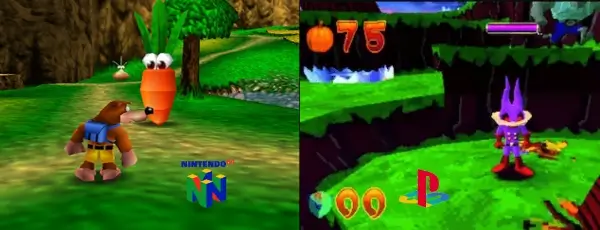
Banjo-Kazooie's open-world collectathon vs. Jersey Devil’s linear gothic platforming
Nintendo Nostalgia vs Practical Reality
Let’s be clear—I grew up loving Nintendo.
- The NES and SNES are core parts of my gaming history.
- Metroid is still one of my all-time favorites for its mysterious world-building and indirect storytelling.
But when it comes to the Nintendo 64, I’ve struggled.
Every time I start a new platformer, it feels like someone is explaining game design to me—like they don’t believe I can enjoy the game on my own.
That’s where the retro console wars get personal.
It’s not just about specs.
It’s about who made games feel better.
Flow Over Friction
Jersey Devil uses a smart hub system with six realms. Each realm features:
- Two levels
- One bonus stage
Your main goals in each level: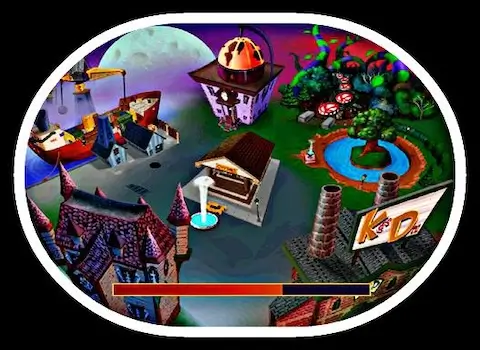
- Rescue hostages
- Destroy crates of nitro to blow up Knarf’s labs
- Defeat bosses and unlock cutscenes
The beauty?
- No tedious returns.
- If you’re good, you can clear a level on the first try and move on.
In contrast, Donkey Kong 64 requires players to:
- Revisit areas multiple times
- Unlock new characters
- Collect color-specific items for each character
It’s exhausting.
Sony's emphasis on rhythm and flow during the fifth generation of gaming still matters in today’s retro gaming discussions.
A World Full of Surreal Wonder
Sony didn’t just design levels—they created dreams with jagged edges. In Jersey Devil, you’ll encounter:
- Waterfalls in Greenpark you must glide through
- Clockwork factory voids filled with moving gears
- A chimp you fight in one level, who later helps you in another
This game always throws something weird and wonderful at you. It’s surreal but grounded. Familiar, yet haunting.
Compare that to many N64 environments, which often feel like: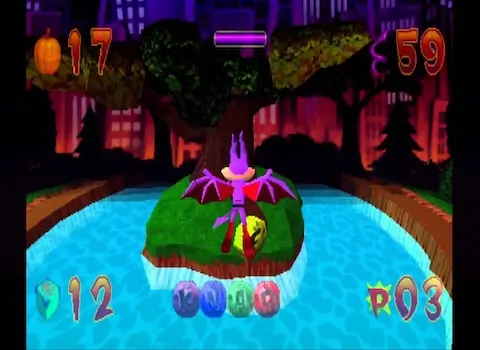
- Abstract playgrounds
- Familiar landscapes that aren’t very memorable
Gothic Imagery That Sticks With You
There’s unforgettable visual design in Jersey Devil:
- A stained-glass skull with buck teeth and a smug grin
- Floating coffins and skeletal figures rising from inky depths
- Dr. Knarf’s collapsing, sky-high lair built like a cartoon’s fever dream
Even the music adds to the madness:
- One minute you’re gliding through eerie winds
- The next, you're marching to an upbeat military track—while dodging undead clowns
It’s absurd and wonderful.
Why PS1 Platformers Still Win for Me
These days, I play Jersey Devil with 99 lives.
I’m not in it for the challenge anymore—I’m in it for the vibe.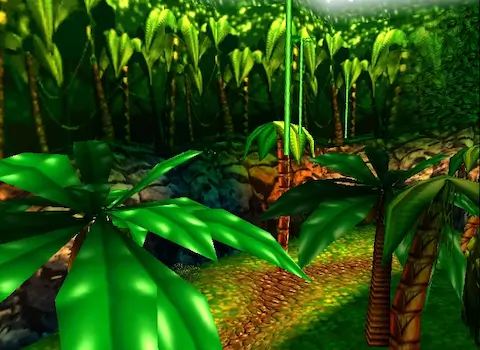
- That feeling of youthful weirdness
- The surreal visuals
- The rhythm of gameplay that feels like a dance
Sony knew how to make that kind of magic.
Nintendo, for all their innovation, sometimes drowned it in repetition.
So when people talk about the PS1 vs N64 generation, I know where I stand.
The retro console wars weren’t just about polygons.
They were about how games made us feel.
Jersey Devil didn’t just entertain me.
It changed the way I look at an entire console.
Frequently Asked Questions
What is Jersey Devil for PS1 about?
- Jersey Devil is a gothic 3D platformer on the PlayStation 1 where players explore surreal environments, defeat enemies, and unravel a quirky story.
How does Jersey Devil compare to Nintendo 64 platformers?
- Unlike N64's collectathon-heavy platformers, Jersey Devil offers a linear, story-driven experience with surreal level design and gothic visuals.
Is Jersey Devil better than Banjo-Kazooie?
- While Banjo-Kazooie is beloved for exploration, Jersey Devil stands out with its unique art style, more focused level structure, and eerie atmosphere.
What are the retro console wars?
- The retro console wars refer to the rivalry between systems like PS1 and Nintendo 64, especially over exclusive games and platform-defining experiences.




